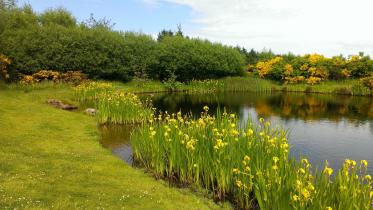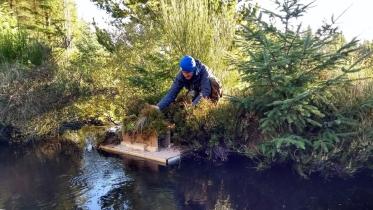Marine renewables: Our approach
We are committed to supporting marine renewables development as part of the Scottish Government’s action on climate change.
We work collaboratively with industry and Scottish Government – Marine Scotland and Crown Estate Scotland, to help ensure the sustainable growth of this sector. Our role is to facilitate marine renewables schemes in the right locations, where renewable energy and natural heritage objectives can both be met. Potential nature and landscape impacts may limit development in some places.
Wave and tidal stream technologies so far appear to offer the most abundant generation prospects and the least impact on the natural heritage in the long term. Both technologies are relatively immature compared with wind energy, but extensive device testing is under way to identify and develop commercially viable technologies.
Find out about wave and tidal energy.
Learn about offshore wind energy.
How we support industry growth
We recognise the need to support the growth of this important industry. We also recognise that timing is crucial, especially for new technologies seeking to attract investment. So, wherever possible, we apply the principles of planning reform to marine developments.
This means that we:
- seek only the information we really need to be able to offer advice
- identify the minimum requirements for survey and assessment
- engage early and share information about likely constraints
- take a balanced view of local environmental impacts and focus on resources that are of national and international importance
Where there are environmental sensitivities, we’ll work with developers to find solutions that enable the development to proceed and which minimise or avoid effects on natural heritage interests.
How we get involved
Inform the location of proposed marine renewables schemes
The best way to minimise impacts is to avoid schemes being sited in potentially sensitive locations. These are places where natural heritage interests are greatest or likely to be most sensitive to such technologies.
As such, we liaise closely with:
- Crown Estate Scotland – through the leasing process
- Marine Scotland – through marine planning
Advise on project applications
Developers of marine renewable energy schemes must apply for various consents.
Regulatory authorities depend on NatureScot for advice on:
- potential natural heritage implications
- baseline surveys and monitoring
- options for avoiding and mitigating impacts
We provide advice on the impact of developments on natural heritage assets. We focus our resources on the most significant impacts and on the areas of greatest risk or uncertainty. We’ve agreed with Marine Scotland a set of priorities for marine renewables casework and we use this to manage competing demands on staff time.
Conduct research on interactions with the natural heritage
To advise on applications, we must know which species and habitats might be affected, and how species might interact with the technology.
We have a key role in:
- identifying, guiding and supporting such research
- advising industry and regulators on monitoring approaches
Develop and provide guidance
Based on our research and practical experience, NatureScot produces guidance for developers and regulators on:
- baseline surveys of wildlife, habitats and landscape
- impact assessment methods
- monitoring of interactions with devices
Other renewable technologies
Learn about our approach to renewable energy development in general.




